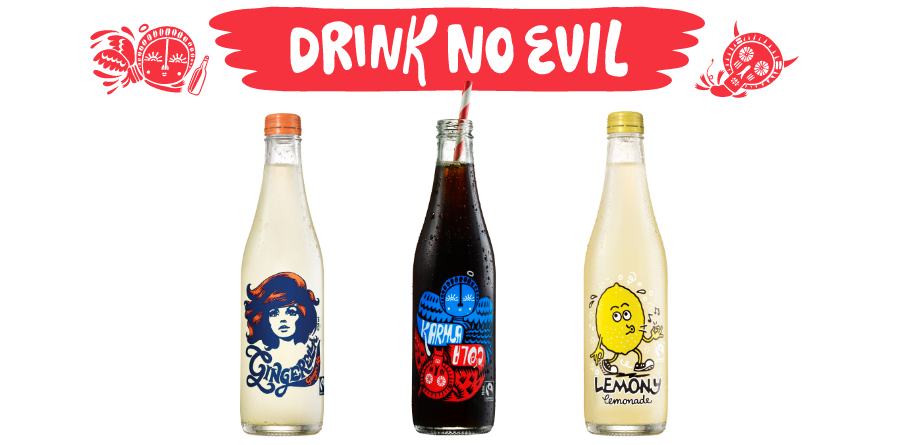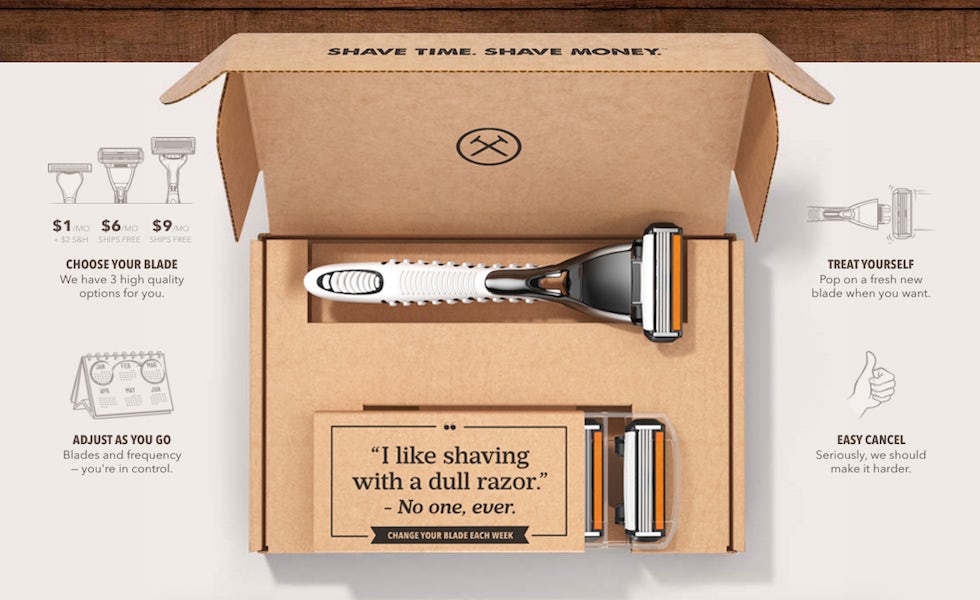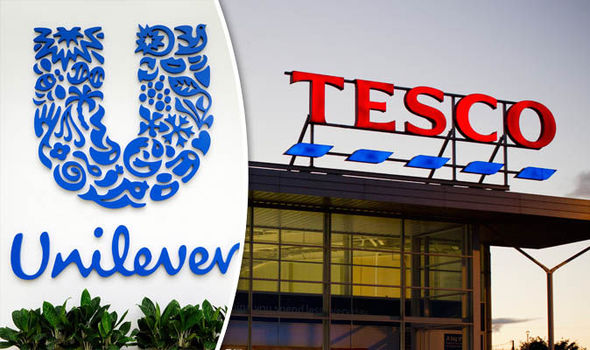Beat the market giants – 6 strengths every startup brand should utilise
In the era of consolidation, there are plenty of challenges for emerging brands and startups. It’s why Brand Hatch exists. From our experience with multi-brand conglomerates, we know how to stand out as a small business and how to leverage your advantages.
Britain is in turmoil and its future feels uncertain. Despite apocalyptic predictions, we have not seen a recession. With hiked up business rates and political incongruence, it would seem like a trying time for startups. Yet, people are still working, still consuming, still innovating. There has been a lot of news about the ‘Death of Entrepreneurship’. Despite a 0.5% dip in the number of new businesses between 2017 and 2018, the growth rate of SMEs has remained fairly stable since 2015, and turnover has even increased (according to the ERC). There are 2.2m more businesses in 2018 than in 2000 (House of Commons Business Report). While it’s important to be cautious, there is no such thing as a ‘perfect market environment’, and this period of ‘uncertainty’ is likely to last years.
Aside from the macro socio-economic challenges, every startup has a market leader to contend with. Every David has his Goliath. With £millions or even £billions at their disposal, it is probably the most daunting factor for any founder of an emerging brand.
This article explores how small brands can turn perceived weaknesses into strengths based on our experience working with the world’s largest multi-nationals.
Agility and flexibility
In this
Being a lean start-up, you are able to implement new technologies and systems to make your business more efficient and streamline costs. Big companies waste resources (time and talent) on archaic processes and ‘dead weight’. It’s incredibly hard to reshuffle and reorganise a large firm.

A startup’s level of agility allows them to downsize their operations if the economy or consumer demand shifts. Larger companies are in a lot of risk is they expand during a boom with incredibly high running costs. This was evident during the Financial Crisis of 2008 and the dramatic fall of business travel compounded by increased government taxes like the APD. British Airways had just expanded their business routes and their fleet.
BA lost £300m in just 6 months and it took years to recover. This cautionary tale can apply to startups as well; those who seize on a ‘current’ trend as the basis of their business. Before the crash of 2009, business travel had exploded and with it came a number of startup airlines specializing in business travel to lucrative routes (namely, New York). Entire airlines folded within months of the crash as their market had evaporated. Without diversifying their offering, they were vulnerable to a shift in the business travel market. It’s important to consider whether the entire foundation of your business is based on an unpredictable economy or a consumer fad. Consider the longevity of the trend and projected growth. Allow yourself to diversify and respond to the market, and consumer.
Every corporation with multiple brands has their BCG matrix of problem children who drain the coffers and hierarchical structures which can hold them back. It can take conglomerates 1-10 years to launch a new product or even rebrand. A startup doesn’t need to wait. Often, it will be emerging brands that innovate the market, with larger companies following suit. The time lag is a big disadvantage, but just as large companies have their problem children, they have their cash cows which bring in the revenue. This revenue funds innovations. There is also a significant reason for the delay. Large brands undertake an extensive process before they launch a new product by harnessing their vast R&D budget: getting the right regulatory approvals, necessary funding & trials and consumer research. Philips Morris is a great example:

With the disruption of the industry (due to a decline in cigarette smoking and the exponential growth of vaping), Philips Morris developed a revolutionary device called IQOS which took 10 years to innovate. Of course, this is under their umbrella mission to make the world ‘smoke-free’. While it uses their lucrative tobacco, it doesn’t use combustion (rather, a low heat). Vape manufacturers are coming under fire for not undertaking enough robust research and governments are responding by banning their products. Philips Morris has the influence and money to lobby governments and the FDA to bring their device into the market. They’ve just launched and have sold 6m units to date. This is proof that an antiquated company can use its resources to innovate and thrive in a turbulent sector.
Culture
Large corporations are hindered by a ‘legacy culture’. It’s ingrained in the four walls of their office, in senior management, even in their ways of working. With a greater focus on wellbeing in the workplace and its impact on productivity, this has become a major issue for many companies. A startup has the unique ability to create its sense of culture that is rooted in its values. Corporate culture seeps through to the consumer – whether it’s customer service, back-end operations, UX, or agency and stakeholder relations. A brand must imbue its values through the people who work for it. Changing the culture of a 100-year-old company with 1500 employees is a lot harder than it is for a small startup who has successfully defined what they want to be and how they want to work from the outset with a handful of people at the helm.

Appeal
if a big company with brands in numerous sectors tries to appeal to a different demographic, they have to be mindful of whether they will be received well by their new target audience, and if this will alienate their existing base.

A great example of a brand extension that went against the grain was the introduction of Coke Life – a hybrid of Diet and Regular Coke (an 89-calorie Coca-Cola drink with sugar and Stevia). With health-led messaging and packaging, it failed to deliver both on product and on the very premise of the brand itself. Needless to say, it’s faded into the background since its launch in 2015. Karma Cola, on the other hand, is a company launched with ethical and healthy foundations and is incredibly successful in its chosen markets. In retrospect, Coca-Cola would’ve fared better had they launched a genuinely healthy cola product from a suitable brand within their portfolio; such as Innocent. It seems like they’ve learned their lesson; it has just been announced that Coca-Cola has launched its first Energy drink under the Coca-Cola brand name. The product and packaging chimes well with their consumer base and portfolio.
Legacy brands carry positive and negative connotations and it’s extremely difficult to shift the dial on brand attributes on one product while retaining their core base.

Play on the market leader’s mistakes and their weaknesses. Have a bird’s-eye view of the market to see the Achilles heel of every big player and emerging brands. Monitor what they’re doing right, and what they’ve done wrong. Learn from their mistakes rather than your own. Mistakes can be expensive, and you’re in a position to avoid them if you’re entering an existing sector. Follow your competitor’s marketing campaigns – what channels are they using and why? There are plenty of resources available to you – from market & consumer research reports to published articles, opinion pieces and financial disclosure reports.
Authenticity
Big companies often seem out of touch with their consumers and tone deaf to current social and cultural trends and shifts. This has given small brands the chance to react in real time on social media – at the expense of the market leaders. There are famous failures like H&M, Pepsi and Dove, but there are plenty that don’t make the headlines, and often fall flat on their face. Follow your competitors, see what kind of traction their branded content gets and whether it’s negative. Adapt and redesign your own marketing communications to ‘clap back’ with a more meaningful and authentic message to send to consumers. Many big brands have large social media management teams filled in 20-twenty something urbanites – and this has been helpful, but not all brands are aimed at young people. Again, you can seize this opportunity to relate to your actual base. You know your audience on a personal level, you’re at a size where you can talk to them honestly and frankly (and importantly, quickly!). Spend some time getting to know your prospects, their online and offline communities, how they engage with brands (if at all), what they like and dislike about your competitors. Authenticity is one of the key USPs of any startup – so build on it.
Fading trust in heritage/legacy brands
Emerging brands have had a distinct advantage in recent times – owed to increased consumer skepticism in large corporations and big brands. Even the market disrupters are not immune to consumer accountability, such as Uber. Edelman’s Trust Barometer indicates that only 48% of Americans trust businesses – a fall of 10% year-on-year. Here in the UK, GfK reported that consumer confidence is at its lowest in a year as we approach the Brexit deadline. Society feels it’s being let down by the establishment – whether that’s the government, infrastructure, or big business. Misinformation, bad PR, consumer skepticism, and a jaded public can give startup brands an opportunity to shine. We’re seeing growing support for small businesses, ingenuity and enterprise.
A good example of this is how the razor market (historically owned by Gillette) is being disrupted by emerging brands. They capitalised on people’s discontent with the high prices of replacement razor cartridges by introducing a new product model. This is happening across all sectors – from mattresses to property management and sales. Find out what people’s grievances are and alleviate them with a fresh way of thinking that’s executed and communicated effectively and with engagement.

Brand equity over brand dominance
Make sure you have a strong brand identity that is rooted in purpose and consumer resonance. Big companies will copy, modify, improve and repackage your product. What’s left is your brand. The brand’s reputation at grass-roots will be your core differentiator at that point and will serve to defend your market share.
It takes time to create a meaningful brand that commands recall and resonance. For a brand to penetrate a market, it has to disrupt it. Innovation, customer experience and ethical foundations are good examples, but often a brand’s personality can be a feature in and of itself. Do not underestimate the power of consumer’s emotions in the decision-making process. How do you want your brand to make consumers feel when they see it, buy it, consume it?

Never assume big brands have unrivalled dominance of any marketplace; for instance, the retailer shelves. For nearly 20 years, big retailers have commanded the power over brands. Retailers seek fierce competition to bring down prices and drive variety. When Unilever tried to hike the prices of their products, Tesco delisted certain brands.
What concerns me about their strategy is that for too long they have aligned their brands with ‘value’ rather than ‘premium’ – with exceptions like Heinz and Nespresso. One of the golden rules of marketing is that you can rarely price your product up – only down. Which leads any startup to make a major decision – price your product or service correctly from the outset. Know your worth, know what consumers are willing to pay, and know your profit margin/COGS.
Large companies rely on brand loyalty, which we know is fading – now, more than ever, is the time to seize on this opportunity and disrupt the marketplace.
The unavoidable disadvantages
The downside of being a startup is a small marketing budget. This means:
Reduced insight and research: This costs money, whether it’s buying marketing reports or conducting qualitative consumer research. A brand must underpin in strategy with consumer insight. Treat this as a priority and find cost-effective ways of understanding your audience.
Bureaucratic challenge: Industry regulatory approvals and compliance with advertising guidelines and claim substantiation. Many startups unknowingly infringe on some of these which can result is delisting from retailers and fines from governing bodies. Make sure you invest in these areas – some of which is made available to you, others require specialists.
Lack of brand awareness: Without media investment, brand exposure will be low. Fortunately, social media and search provide a cheap way to get your brand out there. The downside is that it’s a heavily saturated environment and users have developed behaviours to avoid advertising, immunising themselves to the barrage of messaging. Brand awareness is not a battle you can win, but brand engagement is, so focus on that. For more on this, check out our section of branded content and social media.
Distribution: routes to market can be tricky if you’re not an established brand. Retailers are hesitant to list a product if there is no marketing push behind it or proof of consumer demand. Organic growth and brand advocacy at grass roots are key.
How do startups cope with a limited budget?
A knee jerk reaction for startups is to utilise social media influencers (for more on this, check out our article on Influencer Marketing). This forms part of a wider concept that has taken hold of the industry: ‘growth hacking’.
Growth hacking in itself is actually a useful concept that has garnered huge success for a number of brands such as

Growth hacking in the realm of social media and content is something a bit different and has mutated into something that can be a hindrance. Brand exposure online does not equate to brand affinity, and thus, brand sales. The value of a like or a follow can be extremely low depending on the content you’re pushing out, and the way in which you got them.
Social media growth without laddering back up to what your brand is all about is fairly meaningless. Without a coherent content strategy, you are wasting your resources. Brands that use content to drive engagement and their social footprint forget that there are thousands of publishers doing a better job at content creation. Before embarking on driving your online presence, create a powerful and effective strategy that forms part of your core objectives – never lose sight of these and have them emboldened in your office (whether that’s a loft in Hoxton or your kitchen table). For more on this, check our guide to social media marketing for startups.
The success of any startup cannot be guaranteed by ‘short-cuts’, or by reading articles such as this one!

Awesome post! Keep up the great work! 🙂
Great content! Super high-quality! Keep it up! 🙂
There is definately a great deal to learn about this topic.
I like all of the points you have made.